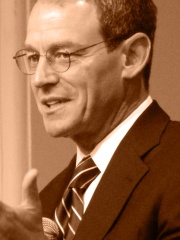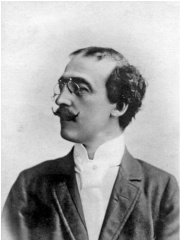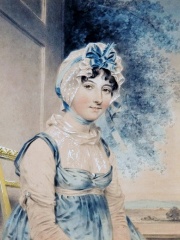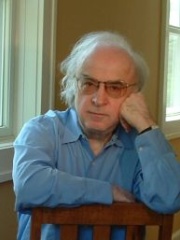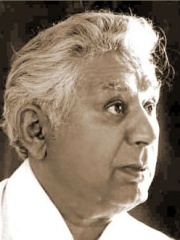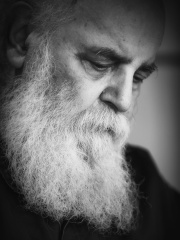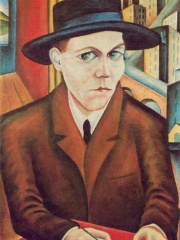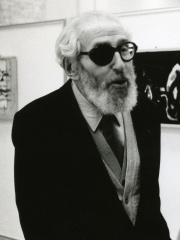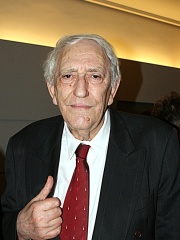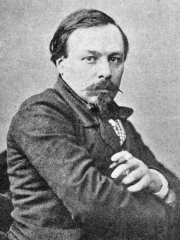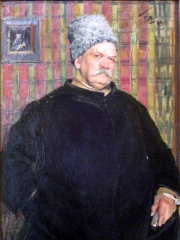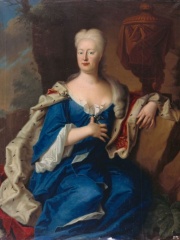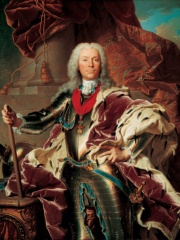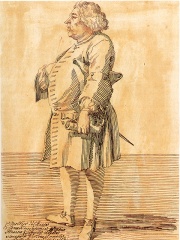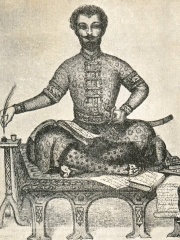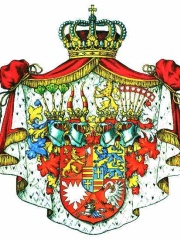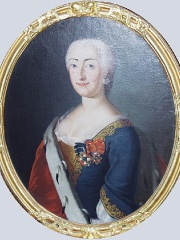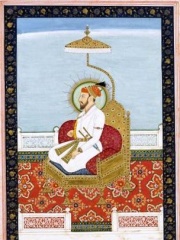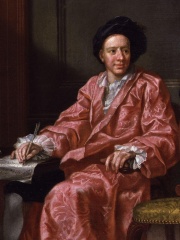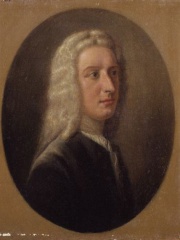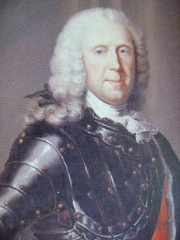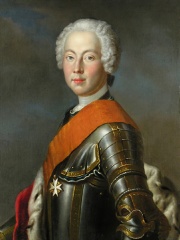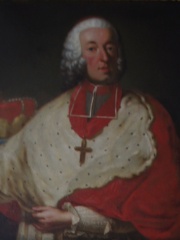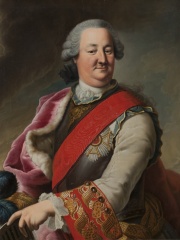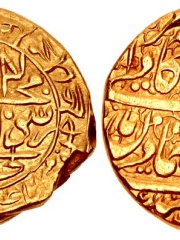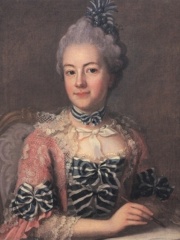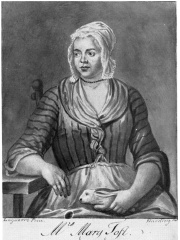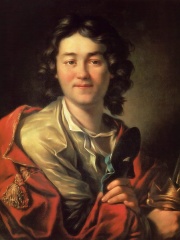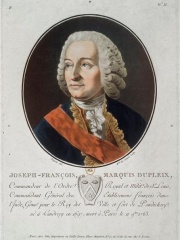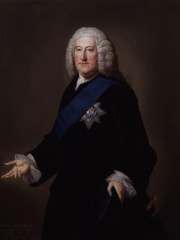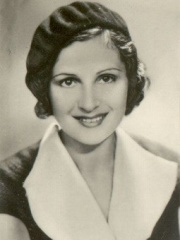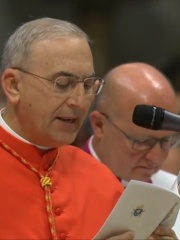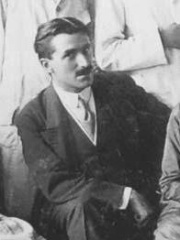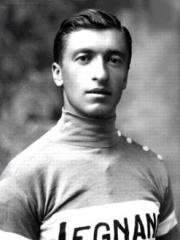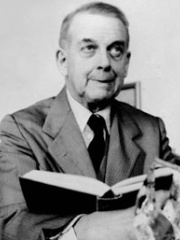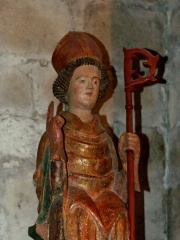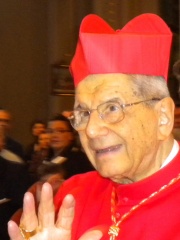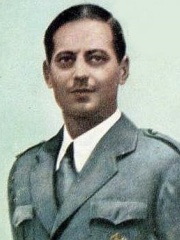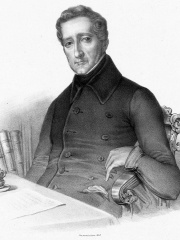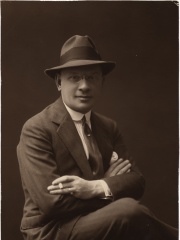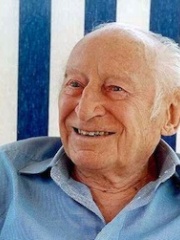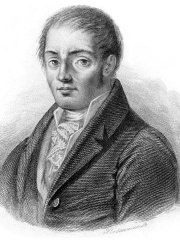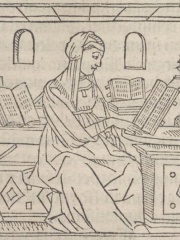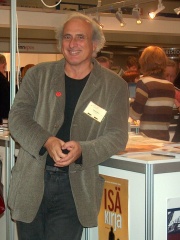WRITER
Marco Foscarini
1696 - 1763
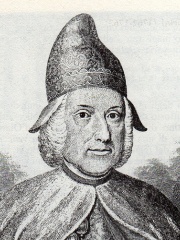
 Marco Foscarini
Marco Foscarini
Marco Foscarini (February 4, 1696 in Venice – March 31, 1763 in Venice) was a Venetian poet, writer and statesman who served as the 117th Doge of Venice from May 31, 1762 until his death. He studied in his youth in Bologna, and was active as a diplomat, serving as ambassador to the Holy See and to Savoy; he also served as the Procurator of St Mark's for a time. Read more on Wikipedia
Since 2007, the English Wikipedia page of Marco Foscarini has received more than 35,007 page views. His biography is available in 18 different languages on Wikipedia. Marco Foscarini is the 4,066th most popular writer (down from 2,795th in 2019), the 3,249th most popular biography from Italy (down from 2,507th in 2019) and the 231st most popular Italian Writer.
Memorability Metrics
35k
Page Views (PV)
50.11
Historical Popularity Index (HPI)
18
Languages Editions (L)
2.21
Effective Languages (L*)
3.36
Coefficient of Variation (CV)
Notable Works
Page views of Marco Foscarinis by language
Over the past year Marco Foscarini has had the most page views in the Italian wikipedia edition with 23,402 views, followed by English (5,615), and German (2,076). In terms of yearly growth of page views the top 3 wikpedia editions are Italian (217.36%), Venetian (120.68%), and Swedish (44.57%)
Among WRITERS
Among writers, Marco Foscarini ranks 4,066 out of 7,302. Before him are Aisha Taymur, Daniel Silva, Alexandru Macedonski, Maria Edgeworth, Norman Manea, and Bozorg Alavi. After him are Hushang Ebtehaj, Oskar Maria Graf, Claude Aveline, Ivo Brešan, Michel Carré, and Vladimir Gilyarovsky.
Most Popular Writers in Wikipedia
Go to all RankingsAisha Taymur
1840 - 1902
HPI: 50.12
Rank: 4,060
Daniel Silva
1960 - Present
HPI: 50.12
Rank: 4,061
Alexandru Macedonski
1854 - 1920
HPI: 50.12
Rank: 4,062
Maria Edgeworth
1768 - 1849
HPI: 50.11
Rank: 4,063
Norman Manea
1936 - Present
HPI: 50.11
Rank: 4,064
Bozorg Alavi
1904 - 1997
HPI: 50.11
Rank: 4,065
Marco Foscarini
1696 - 1763
HPI: 50.11
Rank: 4,066
Hushang Ebtehaj
1928 - 2022
HPI: 50.10
Rank: 4,067
Oskar Maria Graf
1894 - 1967
HPI: 50.10
Rank: 4,068
Claude Aveline
1901 - 1992
HPI: 50.10
Rank: 4,069
Ivo Brešan
1936 - 2017
HPI: 50.09
Rank: 4,070
Michel Carré
1821 - 1872
HPI: 50.09
Rank: 4,071
Vladimir Gilyarovsky
1853 - 1935
HPI: 50.09
Rank: 4,072
Contemporaries
Among people born in 1696, Marco Foscarini ranks 14. Before him are Princess Antoinette of Brunswick-Wolfenbüttel, Joseph Wenzel I, Prince of Liechtenstein, Johann Melchior Molter, Vakhushti of Kartli, Francesca Cuzzoni, and Christian August, Duke of Schleswig-Holstein-Sonderburg-Augustenburg. After him are Eleonore Wilhelmine of Anhalt-Köthen, Shah Jahan II, Henry Home, Lord Kames, Maurice Greene, and James Oglethorpe. Among people deceased in 1763, Marco Foscarini ranks 18. Before him are Anton Ulrich, Duke of Saxe-Meiningen, Frederick, Margrave of Brandenburg-Bayreuth, Johann Theodor of Bavaria, Olof von Dalin, Karl August, Prince of Waldeck and Pyrmont, and Suleiman II of Persia. After him are Hedvig Charlotta Nordenflycht, Khariton Laptev, Mary Toft, Fyodor Volkov, Joseph François Dupleix, and John Carteret, 2nd Earl Granville.
Others Born in 1696
Go to all RankingsPrincess Antoinette of Brunswick-Wolfenbüttel
POLITICIAN
1696 - 1762
HPI: 60.85
Rank: 8
Joseph Wenzel I, Prince of Liechtenstein
POLITICIAN
1696 - 1772
HPI: 55.72
Rank: 9
Johann Melchior Molter
COMPOSER
1696 - 1765
HPI: 53.27
Rank: 10
Vakhushti of Kartli
HISTORIAN
1696 - 1757
HPI: 52.72
Rank: 11
Francesca Cuzzoni
SINGER
1696 - 1778
HPI: 51.70
Rank: 12
Christian August, Duke of Schleswig-Holstein-Sonderburg-Augustenburg
NOBLEMAN
1696 - 1754
HPI: 51.66
Rank: 13
Marco Foscarini
WRITER
1696 - 1763
HPI: 50.11
Rank: 14
Eleonore Wilhelmine of Anhalt-Köthen
NOBLEMAN
1696 - 1726
HPI: 49.87
Rank: 15
Shah Jahan II
POLITICIAN
1696 - 1719
HPI: 48.92
Rank: 16
Henry Home, Lord Kames
WRITER
1696 - 1782
HPI: 46.40
Rank: 17
Maurice Greene
COMPOSER
1696 - 1755
HPI: 46.08
Rank: 18
James Oglethorpe
POLITICIAN
1696 - 1785
HPI: 43.84
Rank: 19
Others Deceased in 1763
Go to all RankingsAnton Ulrich, Duke of Saxe-Meiningen
POLITICIAN
1687 - 1763
HPI: 53.77
Rank: 12
Frederick, Margrave of Brandenburg-Bayreuth
POLITICIAN
1711 - 1763
HPI: 53.56
Rank: 13
Johann Theodor of Bavaria
RELIGIOUS FIGURE
1703 - 1763
HPI: 53.27
Rank: 14
Olof von Dalin
WRITER
1708 - 1763
HPI: 52.01
Rank: 15
Karl August, Prince of Waldeck and Pyrmont
POLITICIAN
1704 - 1763
HPI: 51.59
Rank: 16
Suleiman II of Persia
RELIGIOUS FIGURE
1714 - 1763
HPI: 51.04
Rank: 17
Marco Foscarini
WRITER
1696 - 1763
HPI: 50.11
Rank: 18
Hedvig Charlotta Nordenflycht
WRITER
1718 - 1763
HPI: 49.91
Rank: 19
Khariton Laptev
EXPLORER
1700 - 1763
HPI: 49.37
Rank: 20
Mary Toft
SOCIAL ACTIVIST
1703 - 1763
HPI: 49.15
Rank: 21
Fyodor Volkov
ACTOR
1729 - 1763
HPI: 46.22
Rank: 22
Joseph François Dupleix
POLITICIAN
1697 - 1763
HPI: 45.69
Rank: 23
John Carteret, 2nd Earl Granville
POLITICIAN
1690 - 1763
HPI: 45.60
Rank: 24
In Italy
Among people born in Italy, Marco Foscarini ranks 3,249 out of 5,161. Before him are Nora Gregor (1901), Mario Zenari (1946), Ugo Cerletti (1877), Giovanni Brunero (1895), Frederick, Margrave of Tuscany (1040), and Giorgio Abetti (1882). After him are Austromoine (300), Giovanni Coppa (1925), Giancarlo Cornaggia-Medici (1904), Guaimar IV of Salerno (1013), Antonello Venditti (1949), and Franca Raimondi (1932).
Others born in Italy
Go to all RankingsNora Gregor
ACTOR
1901 - 1949
HPI: 50.14
Rank: 3,243
Mario Zenari
RELIGIOUS FIGURE
1946 - Present
HPI: 50.14
Rank: 3,244
Ugo Cerletti
PHYSICIAN
1877 - 1963
HPI: 50.13
Rank: 3,245
Giovanni Brunero
CYCLIST
1895 - 1934
HPI: 50.13
Rank: 3,246
Frederick, Margrave of Tuscany
NOBLEMAN
1040 - 1053
HPI: 50.12
Rank: 3,247
Giorgio Abetti
ASTRONOMER
1882 - 1982
HPI: 50.12
Rank: 3,248
Marco Foscarini
WRITER
1696 - 1763
HPI: 50.11
Rank: 3,249
Austromoine
RELIGIOUS FIGURE
300 - 300
HPI: 50.11
Rank: 3,250
Giovanni Coppa
RELIGIOUS FIGURE
1925 - 2016
HPI: 50.08
Rank: 3,251
Giancarlo Cornaggia-Medici
FENCER
1904 - 1970
HPI: 50.08
Rank: 3,252
Guaimar IV of Salerno
POLITICIAN
1013 - 1052
HPI: 50.08
Rank: 3,253
Antonello Venditti
SINGER
1949 - Present
HPI: 50.08
Rank: 3,254
Franca Raimondi
SINGER
1932 - 1988
HPI: 50.08
Rank: 3,255
Among WRITERS In Italy
Among writers born in Italy, Marco Foscarini ranks 231. Before him are Leonidas of Tarentum (-320), William of Apulia (1100), Lino Aldani (1926), Titus Calpurnius Siculus (290), Cesare Balbo (1789), and Cecco Angiolieri (1260). After him are Giuseppe Adami (1878), Tullio Pinelli (1908), Francesco Mario Pagano (1748), Isotta Nogarola (1418), Vincenzo Cerami (1940), and Stefano Benni (1947).
Leonidas of Tarentum
320 BC - 260 BC
HPI: 50.50
Rank: 225
William of Apulia
1100 - 1200
HPI: 50.42
Rank: 226
Lino Aldani
1926 - 2009
HPI: 50.34
Rank: 227
Titus Calpurnius Siculus
290 - Present
HPI: 50.32
Rank: 228
Cesare Balbo
1789 - 1853
HPI: 50.26
Rank: 229
Cecco Angiolieri
1260 - 1312
HPI: 50.15
Rank: 230
Marco Foscarini
1696 - 1763
HPI: 50.11
Rank: 231
Giuseppe Adami
1878 - 1946
HPI: 49.88
Rank: 232
Tullio Pinelli
1908 - 2009
HPI: 49.84
Rank: 233
Francesco Mario Pagano
1748 - 1799
HPI: 49.68
Rank: 234
Isotta Nogarola
1418 - 1466
HPI: 49.65
Rank: 235
Vincenzo Cerami
1940 - 2013
HPI: 49.51
Rank: 236
Stefano Benni
1947 - Present
HPI: 49.50
Rank: 237

